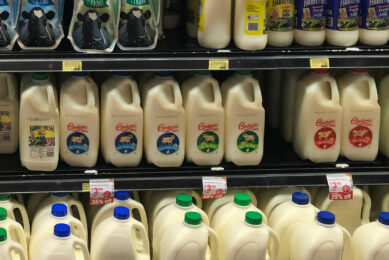Windfall gain for dairy farmers but lower prices ahead

The low value of the New Zealand dollar against the US dollar is likely to prove a windfall gain for dairy farmers in New Zealand. “Nonetheless, we still expect global dairy prices to gradually fall from their peaks over 2022,” says senior agri economist, Nathan Penny of Westpac.
According to Penny, the recent NZD/USD revision gives a small boost to the current season’s milk price forecast, but a much larger boost next season. “Fonterra hedges its NZD exposure well in advance,” Penny points out. “This means that much of this season’s NZD exposure is already locked and thus the benefit of a lower NZD/USD is small. In contrast, Fonterra has plenty of time to take advantage of the lower NZD/USD for next season.”
Supply rebound
The bank still expects global dairy prices to gradually fall from their peaks over 2022, as global dairy supply rebounds in 2022. “This rebound will prove the main catalyst for the decline in global dairy prices,” Penny explains.
But for the moment it seems the ducks continue to line up for dairy farmers for longer. “That’s not to say there aren’t risks,” Penny emphasises. “We continue to highlight the cost pressures that farmers are facing. Keeping a lid on costs wherever possible will remain key to making the most of this purple milk price patch.”
The Global Dairy Trade (GDT) Index decreased for the first time since 3 August. The index fell on 21 December by 1.5%. This resulted in an average price of US$4,236 per mt, down from US$4,290 per mt on 7 December. Whole milk powder, which strongly influences pay-outs for farmers, dropped 3.3% to $US3,867 a tonne.
Highest average returns
Dairy Australia says in its Situation & Outlook Report that last year proved to be one of the most profitable in recent times as most dairy regions reported their highest average returns since season 2013-2014. This helped improve the health of many farm businesses and several factors, including a generally higher farmgate milk price, are supportive for the season ahead.
Global demand for dairy has improved as more countries re-emerge from lockdowns, at a time when supply is tight. While dairy market dynamics remain supportive, seasonal conditions have created several challenges. Above-average rain, storms and cold fronts in Australia have weighed on per-cow yields, caused flooding in some regions and disrupted harvest proceedings.










